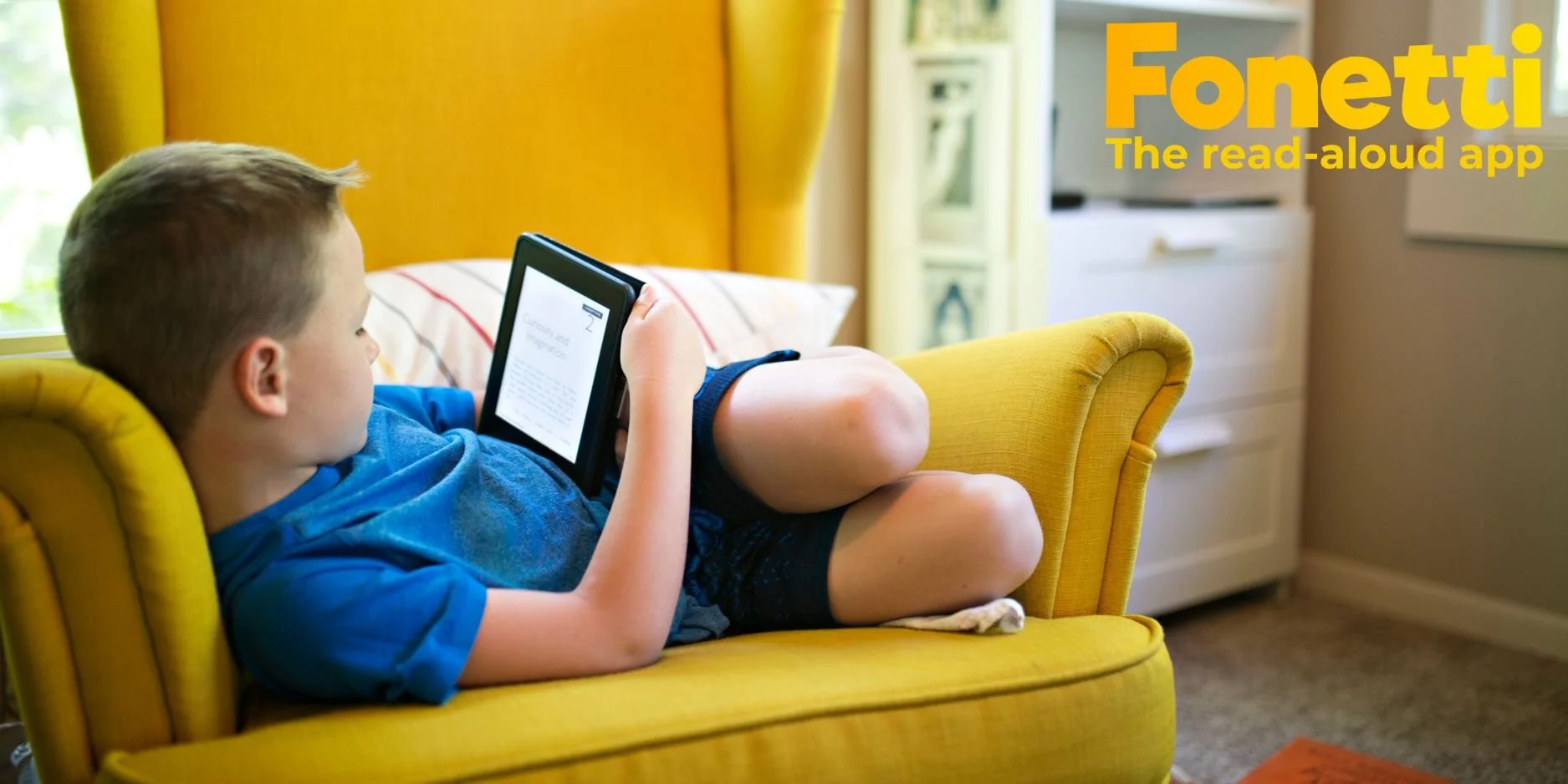The Great Screen Time Debate: Reframing EdTech for Children’s Development
No discussion about EdTech would be complete without addressing the ever-present topic of screen time. In an age where children are spending more time than ever online, it’s understandable that many parents and educators feel cautious about actively encouraging further device use—even when it’s for educational purposes.
Concerns about excessive screen time are well-founded. Research links high screen usage to a range of risks: increased chances of obesity, disrupted sleep patterns, eye strain, and mental health challenges such as anxiety and depression. But here at Fonetti, we believe there’s an important nuance that often gets overlooked: not all screen time is created equal.
In fact, when designed with care and used in moderation, educational technology and AI tools can offer powerful opportunities for child development. It’s time we shift the conversation from how much screen time is too much, to what kind of screen time children are engaging in.
Active vs Passive Screen Time: Understanding the Difference
The key distinction lies in how children interact with their screens. Passive screen time—such as binge-watching shows or endlessly scrolling through social media—can certainly be problematic, especially in large quantities. It tends to displace physical activity, interrupt sleep, and limit real-life social interaction.
But active screen time is a different story. Interactive technologies that encourage engagement, creativity, and problem-solving can be incredibly beneficial. Whether it’s reading aloud, solving puzzles, or exploring digital stories, these activities stimulate rather than stifle development.
At Fonetti, we build reading tools that actively involve children—inviting them to read aloud, receive instant feedback, and stay engaged in a constructive and purposeful way.
Meeting Children Where They Are
Children are growing up in a digital-first world. For many, screens are not a novelty—they’re a normal part of everyday life. That’s why positioning reading as an activity that fits seamlessly into this digital routine makes so much sense.
Rather than presenting reading as a chore or a task separate from “fun” activities like gaming or video watching, EdTech allows us to blur that boundary. Reading on-screen becomes something children choose, enjoy, and even look forward to.
This shift in perception could have a surprising benefit: it may reduce the amount of truly passive screen time children consume. In replacing endless video-watching with a reading app, children aren’t just learning—they’re avoiding exposure to potentially inappropriate content too. Unlike open web platforms, EdTech environments like Fonetti are carefully curated and age-appropriate by design.
Digital Reading as a Stepping Stone
Ironically, using technology to encourage reading might actually reduce children’s dependency on screens over time. Here’s why: developing reading confidence early on opens the door to a whole world of non-digital pastimes.
Children who enjoy reading are more likely to pick up physical books, explore written materials, and feel empowered in their education. By gamifying and digitalising the reading journey, we lay the foundations for skills and habits that extend well beyond the screen.
Technology as a Social Connector
Another overlooked advantage of EdTech is the social layer it can offer. Reading becomes something children can do with others—whether that’s tracking books with friends, sharing favourites, or even engaging in friendly reading challenges.
For parents and teachers, this technology opens up new avenues for involvement. Features like progress tracking and reading insights allow adults to follow a child’s journey closely and provide support where it’s needed most—without disrupting the child’s independence or flow.
How Fonetti Encourages Positive Screen Time
At Fonetti, we’re proud to champion a vision of screen time that’s positive, purposeful, and productive.
We know that improving children's enjoyment, confidence, and frequency of reading is key to reversing the stagnation in literacy progress—and we believe technology can be part of the solution. Our app uses Automatic Speech Recognition (ASR) to transform reading into an engaging, interactive experience.
ASR enables children to read aloud independently while receiving real-time feedback, allowing them to build fluency and confidence on their own terms. At the same time, parents and educators can access insightful data on reading habits and progress—all within a safe, structured, and empowering environment.
In summary: The screen time debate is complex, but it’s not black and white. When used thoughtfully, EdTech can be a force for good—helping children build crucial skills, stay engaged with reading, and ultimately thrive in a digital world.
Let’s move beyond fear and focus on the future: a future where screen time supports learning, connection, and growth.

